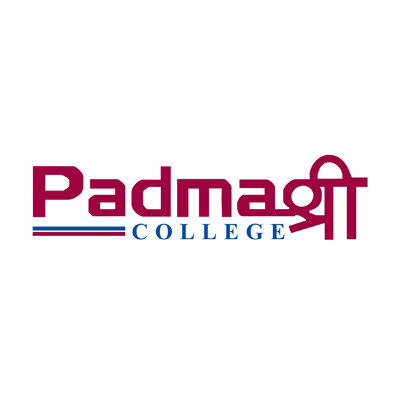Overview
Bachelor of Fine Arts (BFA) at Lalit Kala Campus, Bhotahity, Kathmandu
Bachelor of Fine Arts (BFA) at Lalit Kala Campus, Bhotahiti, Kathmandu is a four-year undergraduate program run under Tribhuvan University (TU), Faculty of Humanities and Social Sciences. It is one of the core public pathways in Nepal for students who want structured academic training in visual and performing arts within a recognized national university framework.
The course is grounded in practical studio work, theory, and critical understanding of art in relation to society, culture, and history. Students spend their formative years learning not only techniques but also ways to observe, think, interpret, and express through their chosen medium.

Highlights
-
Course Name: Bachelor of Fine Arts (BFA)
-
Institution: Lalit Kala Campus, Bhotahity, Kathmandu
-
Affiliation: Tribhuvan University (Faculty of Humanities and Social Sciences)
-
Program Type: Full-time undergraduate degree
-
Duration: 4 years (as per TU structure for fine arts programs)
-
Specializations (as offered by the campus): Music, Painting, Sculpture, Graphic Communication
-
Academic Framework: TU-approved curriculum, examinations, and certification
-
Medium of Instruction: Nepali and English (depending on course and teacher)
-
Target Learners: Students interested in structured art education, teaching careers, cultural work, media, illustration, and creative practice within a public university system
Curriculum Details
The BFA program at Lalit Kala Campus follows Tribhuvan University regulations and uses a combination of theory and practice. It gradually moves students from basic skills to focused work in a selected specialization.
Key academic components include:
-
Foundation courses in drawing, form, color, composition, and visual language
-
Art history and aesthetics with reference to Nepali, South Asian, and global traditions
-
Practical courses specific to each specialization
-
Internal assessment and final examinations conducted under TU rules
-
Project work, portfolios, practical examinations, and viva-voce as applicable
Specializations Offered
Students normally choose one core area after completing foundation requirements, based on the campus rules for each intake:
-
Music
-
Painting
-
Sculpture
-
Graphic Communication
Each stream maintains a strong practical focus, supported by related theory and contextual studies.
Course Structure and Academic Duration
The duration is four academic years. The structure follows TU’s approved system (yearly or semester format as implemented in the concerned period). Students must:
-
Complete prescribed subjects and credit requirements
-
Meet attendance and internal evaluation criteria
-
Pass practical and theory examinations under Tribhuvan University
For the latest official structure, students should consult Lalit Kala Campus notices and TU’s Faculty of Humanities and Social Sciences.
Objectives
The BFA program at Lalit Kala Campus aims to:
-
Help students build strong technical skills in their chosen medium through continuous practice
-
Develop understanding of art as a cultural, social, and historical field, not only as production of images or performances
-
Encourage disciplined studio habits, critical observation, and independent thinking
-
Prepare students for responsible roles in teaching, cultural institutions, studios, media, and creative sectors
-
Provide a credible, public-university pathway for fine arts education accessible to Nepali students
For you as a learner, this course creates a clear structure: where you start, what you learn each year, and how your work is evaluated.
Scope
The scope of BFA from Lalit Kala Campus is closely connected to the growth of arts, culture, education, and creative industries in Nepal.
Students and graduates:
-
Work as painters, sculptors, illustrators, printmakers, graphic communicators, and musicians
-
Teach art and music in schools, colleges, and training centers (subject to additional qualifications where required by law)
-
Contribute to galleries, cultural programs, heritage projects, media production, stage performance, and visual communication units
-
Prepare for further study (MFA, MA in Music, related postgraduate programs) in Nepal or abroad, supported by a recognized TU degree
This scope depends on your commitment, portfolio, and professional conduct; the degree gives a structured base.
Learning Outcomes
By the end of the BFA at Lalit Kala Campus, a dedicated student is expected to:
-
Demonstrate sustained practical skills in the selected specialization
-
Present artworks or performances that show control over medium, technique, and concept
-
Read, discuss, and reference key developments in Nepali and international art
-
Document work through portfolios, scores, recordings, or visual formats suitable for further study or professional use
-
Engage with ethical issues in cultural representation, intellectual property, and public presentation of art
-
Work in teams for exhibitions, performances, or collaborative projects
These outcomes are anchored in studio work and formal assessment rather than slogans.
Skill Development Modules
Students gradually develop both artistic and transferable skills, such as:
-
Drawing, sketching, composition, and color handling
-
Sculpture techniques (modelling, carving, casting, mixed media), where relevant
-
Graphic communication skills such as layout, typography basics, visual hierarchy, and manual or digital processes
-
Vocal or instrumental practice, rhythm, notation, and performance skills in the Music stream
-
Observation, research, and critical reflection for concept development
-
Presentation skills for juries, exhibitions, and auditions
-
Time management, discipline in studio use, and project completion
These skills help you function as a practicing artist, educator, or creative professional in real settings.
Teaching Methodology at Lalit Kala Campus
Lalit Kala Campus uses methods suitable for fine arts as a practice-based discipline under a public university framework:
-
Studio-based instruction under subject teachers
-
Demonstrations followed by guided practice
-
Regular assignments, sketchbooks, and practice routines
-
Group critiques and feedback sessions to refine work
-
Theory classes in art history, aesthetics, and related subjects
-
Practical examinations, exhibitions, or juried assessments under TU norms
Learning depends strongly on your daily engagement. Faculty members guide, evaluate, and maintain academic standards within TU rules.
Admission Requirements
Admission is based on Tribhuvan University rules and official notices.
General requirements:
-
Completion of Grade 12 or equivalent from a recognized board in any stream
-
Fulfillment of minimum academic criteria as set by TU for BFA for the relevant year
-
Appearance in the BFA entrance examination conducted under Tribhuvan University for Lalit Kala Campus
-
Securing at least the pass mark in the entrance test to qualify for enrollment
-
Submission of required documents:
-
Academic transcripts and certificates
-
Copy of citizenship certificate or passport
-
Recent photographs
-
Any additional documents specified in official notices
-
Seat allocation, reservation, and inclusion follow TU and national policy guidelines as published.
Career Opportunities
Graduates of the BFA program at Lalit Kala Campus can explore roles such as:
-
Painter, sculptor, printmaker, or mixed-media artist
-
Graphic communication professional in studios, publications, or media houses
-
Music practitioner, performer, session artist, or instructor
-
Art and music teacher in schools and colleges (subject to teacher qualification rules)
-
Gallery assistant, exhibition coordinator, cultural program organizer
-
Illustrator for books, journals, educational materials, and visual campaigns
-
Freelance creative professional producing commissioned work, performances, or projects
For policy makers and institutions, a BFA graduate from Lalit Kala Campus represents training under a monitored public system, which is relevant when hiring or assigning academic roles.
Scholarships and Financial Aid
Lalit Kala Campus follows Tribhuvan University and government guidelines for scholarships and support schemes where applicable.
Key points:
-
Limited scholarships on the basis of merit or need, subject to TU rules
-
Reservation-related support if announced through official notices
-
Students should check campus and TU notices each intake for current criteria, required documents, and deadlines
Any claim regarding fee waivers or external funding should match official documents only.
Why Choose Bachelor of Fine Arts at Lalit Kala Campus?
Bachelor of Fine Arts at Lalit Kala Campus serves students who:
-
Seek a recognized public-university degree in fine arts under Tribhuvan University
-
Want structured learning in Music, Painting, Sculpture, or Graphic Communication within one specialized campus
-
Value a studio-focused environment supported by experienced teachers and academic rules
-
Need a comparatively accessible fee structure from a public institution
-
Wish to connect their art practice with Nepali cultural contexts along with broader artistic discussions
-
Require reliable records and transparency that can be presented to employers, academic bodies, and scholarship agencies
For your educational planning, this course offers clarity: known affiliation, known location, defined intake process, exam rules, and a visible institutional legacy.
Conclusion
Bachelor of Fine Arts at Lalit Kala Campus, Bhotahity, Kathmandu is a structured, recognized, and practice-oriented fine arts program under Tribhuvan University. It gives students a steady framework to learn, create, question, and prepare for real work in art, music, culture, and education.
Students, parents, and institutions can rely on this program because it operates within public regulations, uses formal examinations, and maintains academic records that can be verified through TU and official campus communication.
For accurate and current details on seats, syllabus updates, and fee structure, readers should always refer directly to Lalit Kala Campus and Tribhuvan University notices.
Frequently Asked Questions (FAQ)
1. What is the duration of the BFA program at Lalit Kala Campus?
The BFA program runs for four academic years under Tribhuvan University, with structured progression through foundation, intermediate, and specialization levels.
2. Which specializations are offered?
Lalit Kala Campus offers BFA specializations in Music, Painting, Sculpture, and Graphic Communication, subject to availability and official campus provisions for each intake.
3. Is prior art or music training compulsory?
Formal training is not compulsory, but entrance tests assess drawing or musical aptitude, observation, and basic art awareness. Students without prior training need focused preparation to meet the test standard.
4. Is the degree recognized for further study and employment?
Yes. The BFA is awarded under Tribhuvan University, a national public university of Nepal. Graduates use this qualification for postgraduate study, teaching (with required additional qualifications), and professional work in relevant sectors.
5. How can students get updated information on admission, fees, and seats?
Students should follow official notices published by Lalit Kala Campus and Tribhuvan University through their websites, notice boards, and authorized communications. Information from unofficial portals needs cross-verification against these primary sources.


















